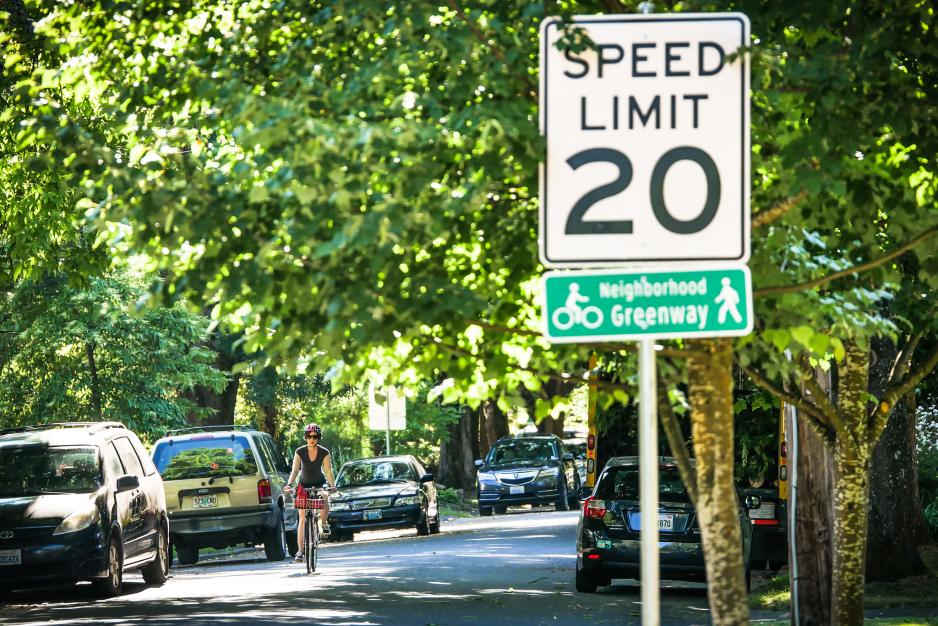While the best way to slow vehicle speeds is through physical design of the street, setting context-appropriate speeds and enforcing speed limits can have some impact on reducing speeds.
Reevaluate assumptions about speed limits. A research synthesis conducted in 2020 by the University of California’s Institute for Transportation Studies found that reducing posted speed limits also reduces drivers’ operating speeds and improves safety across most road environments. This synthesis also found that recent studies indicate that there is not strong evidence to support the claim that using the 85th percentile speed resulted in the lowest crash rate.
- Set speed limits considering context. The Department of Motor Vehicles states that regardless of the posted speed limit, speed should depend on various conditions, including the presence of bicyclists or pedestrians on or crossing the roadway. Agencies conduct engineering and traffic studies (ET&S) to establish speed limits. The ET&S considers the prevailing speed of traffic, history of crashes, and pedestrian and bicyclist safety. The most widely accepted method of determining the posted speed is to set it at the speed at or below which 85 percent of the traffic is moving. However, special circumstances as determined by a traffic engineering study can warrant the lowering of speed limits such as unusual geometry, school zones, restricted sight distance, unsafe conditions, or significant pedestrian activity.
- Set slower speeds in school zones. In school zones, business districts, and residential areas, the Prima Facie speed limit is 25 mph, meaning drivers must drive at 25 mph or less even if speed limit signs are not posted. If lower speeds are marked, those must be followed. For example, California law permits a 15 mph speed limit adjacent to schools.
- Review and reset speed limits after installing roadway modifications that calm traffic. Installing traffic calming features along a roadway can reduce vehicle speeds and then warrant a speed limit reduction based on the current law.
- Enforce posted speeds using presence of law enforcement, portable, and permanent speed feedback signs.
- Stay abreast of changing guidance on setting speed limits. In California, the primary way speed limits are set is by setting the speed within 5 mph of the 85th percentile speed–the speed at which 85 percent of vehicles are traveling at or below. This methodology was developed decades ago for vehicles on rural roadways and does not consider urban roadways where people are walking and biking. In September 2021, the California legislature passed AB 43 that permits local jurisdictions to lower speed limits on certain streets. Under the law, local jurisdictions may set lower speed limits on streets and state highways that pass through business and residential areas and or that are designated “safety corridors” without following the 85th percentile law. The law is being phased into implementation, with full implementation no later than June 2024. This law was based on work conducted by the Zero Traffic Fatalities Task Force established by the California Secretary of Transportation in 2008.
Body
